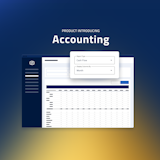Before Your Tenant Moves In: Know What to Charge and How to Calculate It
Prepaid rent
Prepaid rent is exactly as it sounds: rent that is paid prior to the period for which it is applied.
First month's rent
The most common form of prepaid rent is first month’s rent which is due and collected before move-in.
First month’s rent should be paid after the lease agreement has been signed by all parties but before the tenant receives the keys to the property and moves in. This indicates that the terms of the lease are agreed upon and that the tenant has the ability to pay for the rental now and in the future. Following this order of processes also helps protect tenants as they should not be making payments unless there is a valid lease agreement.
Last month's rent
With respect to prepaid rent, it is not recommended to collect last month’s rent in advance. Although last month’s rent can provide a sense of security in the event that your tenant decides to skip out on the lease early, it can also lead to headaches down the line.
The first issue with collecting last month’s rent is that it can deter many potential tenants from even signing the lease. Many Americans in the rental market live paycheck to paycheck and asking for last month’s rent in addition to other prepaid rent can deter some renters from applying. By asking for last month’s rent you may miss out on great tenants that could afford the monthly rent but not a large upfront payment equivalent to three months’ rent (last month’s rent, security deposit, and first month’s rent).
Collecting last month’s rent as prepaid rent can also be an issue when it comes to problematic tenants and evictions. Depending on the laws in your state, it can be extremely difficult to evict a tenant once you have collected the last month’s rent payment. This is because the tenant has already paid for a future month and the courts will take that into consideration when reviewing the case. So, even though a tenant may not be paying their monthly rent it could hinder your ability to evict them because they have prepaid a future month’s rent.
A common misconception about last month’s rent is that it can be used for the same purposes as a security deposit, such as property damage or missing rent payments. However, last month’s rent when collected as such can only be used towards the rent for the last month of the lease.
Pro Tip: Collect a Security Deposit instead
Security deposit
As an alternative to collecting last month’s rent, it is recommended to collect a security deposit instead. A security deposit can be used to pay for both property damage and missing rent payments. And collecting a security deposit will not affect your ability to evict a tenant.
Note that state laws differ in regards to how much you can ask for, where you can hold and store the security deposit, and time frames in which you must return the deposit. It should be made a condition of your lease that the security deposit must be paid prior to move-in. This will minimize your risk by ensuring that if the tenant does not pay the security deposit you will have the option to cancel the lease and rent to another tenant.
Prorated Rent
Prorated rent is the amount of rent a landlord collects from a tenant when the tenant only occupies the unit for a portion of the billing month. You’ll need to prorate rent when a tenant moves in (or out) partway through the month. Landlords often allow for this to avoid vacancies and the associated costs of not having cash flow.
When charging and calculating prorated rent you must follow the relevant terms outlined in your lease agreement. For example, some leases will state that prorated rent will be calculated based on a 30 day month. If there are no existing terms in your lease regarding prorated rent, it is recommended that you follow the monthly calculation approach as it is usually easier to understand.
Here are two ways to calculate prorated rent:
1. Daily rate calculated based on the month
The first approach to calculate prorated rent is the most common and is often easier for landlords and tenants to calculate and understand. Using this approach you first divide the monthly rent by the number of days in that month. Then, you multiply that number by the number of days the tenant will be paying rent for. This gives you the following formula:
(monthly rent/number of days in the month)*number of days the tenant is paying for = prorated rent
Let’s do an example. Suppose you have a tenant moving in on August 22nd and you charge $2,000 per month in rent. There are 31 days in the month of August which means the tenant will occupy the property for the last 9 days of the month. The calculation would be as follows:
($2,000/31)*9 = $580.65
2. Daily rate calculated on an annual lease
The second approach to calculate prorated rent only works if the tenant has signed a year-long lease agreement. It is also a more accurate approach as it accounts for the rent charged per day of the lease.
To calculate prorated rent using this approach you begin by multiplying the monthly rent by 12 to get the annual rent amount. Then divide the annual rent by the number of days in a year, 365. Then, multiply it by the number of days the tenant will be paying for.
((monthly rent*12)/365)*number of days the tenant is paying for = prorated rent
Using the same example as above, a move-in date on August 22nd, and a monthly rent of $2,000 the calculations would be as follows:
(($2,000*12)/365)*9 = $591.78
Prorated rent should be prepaid in addition to first month’s rent if it is in the same month of move-in.




